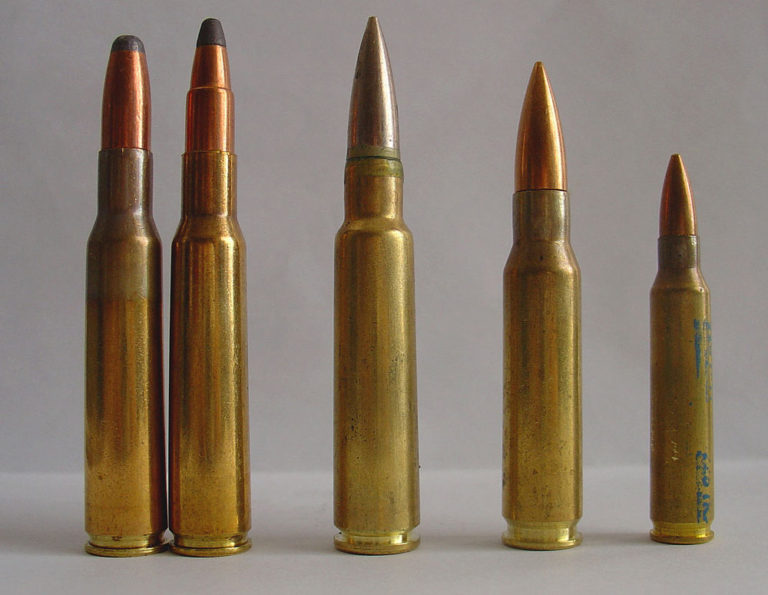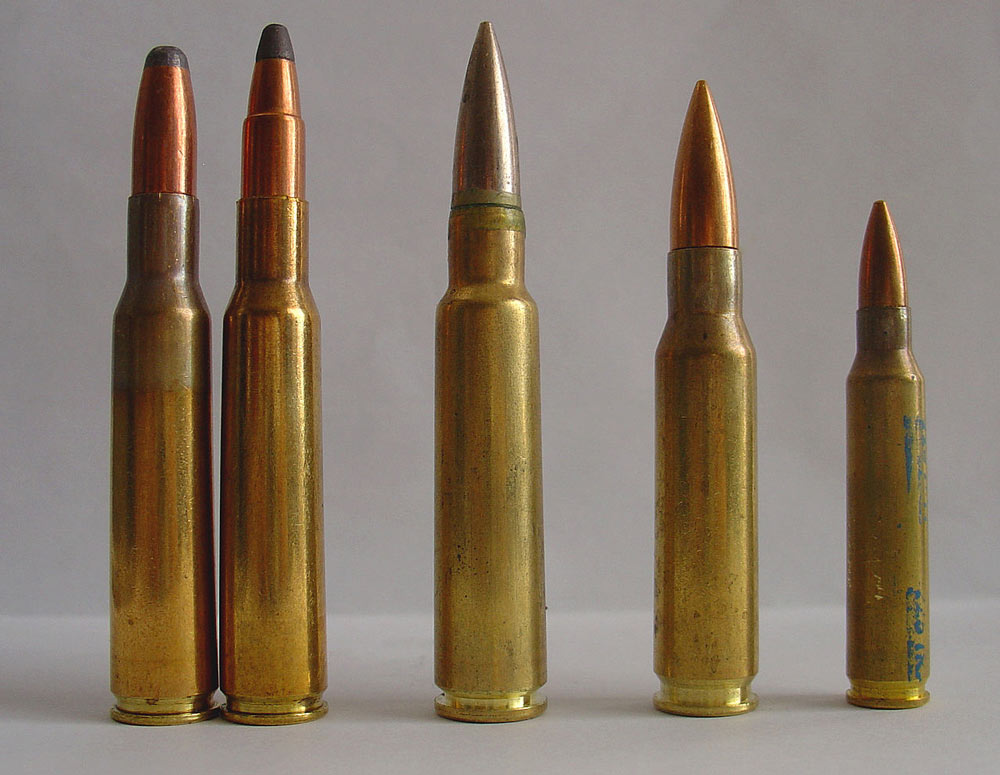

If Paul Mauser had not developed this cartridge in 1892, and had Spain not adopted it as their military cartridge a year later, we might not have developed and then adopted the .30-06 in 1906.
At the time of the Spanish-American conflict in 1898, the US Army was armed with the .30-40 Krag cartridge loaded with a 220 grain round-nose bullet at a muzzle velocity of 2000 fps. The rifle for it by Krag-Jorgensen had to be loaded a single cartridge at a time, whereas the Spanish troops were armed with Mauser 93, which was loaded from a clip, a much faster method.
At the major battle of the campaign, about 6,500 U.S. soldiers attacked around 750 Spanish defenders in and around San Juan Hill. While the US forces prevailed, they did so at a very high price. About twice the number of defenders were casualties on the US side. Later assessments by US military authorities of the battle results concluded that the reason for the substantial casualties suffered by the US forces was that they were out-gunned by the Spanish defenders and their Model 93 Mauser rifles chambered for the 7×57mm cartridge.
Not long after this finding, the US came out with the .30-03 cartridge and the 1903 Springfield rifle modified soon thereafter to the .30-06 cartridge. Not only was the 7×57 cartridge a proven military round, it was quickly loaded in civilian guise for the sporting market.
Germany found a ready market for their cartridge and Mauser actions in England. Sport hunters quickly learned that the cartridge was a great hunting round. It was an efficient killer of game while delivering very modest recoil to the shooter.
The old firm of John Rigby produced a goodly number of their fine rifles for the 7×57, which they chose to call the .275 Rigby. Perhaps its best known proponent was W.D.M. “Karamojo” Bell. John “Pondoro” Taylor reports in his landmark book on African Rifles and Cartridges, that Bell killed 1,011 elephants during his career, “practically all of which he shot with his Rigby-Mauser of this caliber” (.275 Rigby). Jim Corbett of The Man-Eaters Kumaon fame, used a .275 Rigby as his #2 rifle. With it, he shot all manners of tigers and leopards in India.
It's popularity as a sporting cartridge didn't take long to cross the Atlantic. Most major US rifle manufacturers, sooner or later, chambered rifles in for the cartridge. One of the rarer pre-64 Model 70 chamberings was for the 7×57.
Outdoor writer icon Jack O'Connor was an early fan of the cartridge. Both he and his wife Eleanor were big fans, but it was Eleanor's favorite and most used rifle. It was a custom job that Jack had built for himself. Metalsmith Tom Burgess did all the metalwork and Russell Leonard crafted the stock. Eleanor tried the rifle and after having the stock shortened a bit, decided that it had to be hers. She used it for the vast majority of her hunting from then on. She used it to take a 44-1/4 inch Dall ram that won a Boone & Crockett medal in 1963. She took it to Mozambique in 1962 and shot seventeen animals with nineteen shots.
Jack wrote in his book, The Hunting Rifle, “The only animal that took more that one shot was a kudu bull that didn't know when it was dead.”
Jack finally got his own 7×57 chambered rifle a few years later, in 1957, when he contacted Winchester and inquired about a Model 70 in 7×57. The Winchester folks told him that they had exactly one 7mm barrel left and they'd do up a rifle for him. He sent it to Al Biesen who shortened the barrel to 22”, stocked it in a nice stick of French walnut, and mounted a Weaver K4 scope in Redfield mounts. He used it on quite a few hunts after that, including taking it to Namibia and Zimbabwe.

The C.I.P established maximum pressure for the cartridge is 56,5565 psi. The SAAMI maximum average pressure is set at 51,000 psi, in deference to the older Mauser still around in that chambering. A modern rifle in that cartridge should be perfectly safe at 60,000 psi. I wouldn't hesitate to load cartridges at that pressure level for use in my semi-custom Ruger rifle, or in a custom rifle on a pre-64 Model 70 action that I once owned but stupidly let get away from me.
The 7×57 has been around for a long time, but even so, the one-rifle North American hunter could do far worse than the little 7mm as his/her choice of cartridge provided, the big bears weren't on the menu. It leaves little to be desired on the table. It is difficult to argue with success and one look at Eleanor O'Connor's track record with it should be sufficient.

Next Step: Get your FREE Printable Target Pack
Enhance your shooting precision with our 62 MOA Targets, perfect for rifles and handguns. Crafted in collaboration with Storm Tactical for accuracy and versatility.
Subscribe to the Gun Digest email newsletter and get your downloadable target pack sent straight to your inbox. Stay updated with the latest firearms info in the industry.

![Best Concealed Carry Guns In 2025 [Field Tested] Wilson Combat EDC X9S 1](https://gundigest.com/wp-content/uploads/Wilson-Combat-EDC-X9S-1-324x160.jpg)


![Best 9mm Carbine: Affordable PCCs [Tested] Ruger Carbine Shooting](https://gundigest.com/wp-content/uploads/Ruger-Carbine-Shooting-100x70.jpg)
![Best AR-15: Top Options Available Today [Field Tested] Harrington and Richardson PSA XM177E2 feature](https://gundigest.com/wp-content/uploads/Harrington-and-Richardson-PSA-XM177E2-feature-100x70.jpg)

Few people realize that under field conditions the 7×57 and the various 6.5 mm have tremendous penetration with heavy bullets. The magnum is often more of a draw back as it generates more noise and recoil and must have a long heavy barrel to achieve higher velocity which is not needed at practical hunting ranges. Most once a year hunters are lucky if they can hit a deer sized animal a 25 yards under the often awkward shooting position in the field. Penetration and shot placement are what kills not bullet diameter as diameter is largely only a myth in regards to killing power.
What’s the deal with the bullet in the right hand 7mm cartridge pictured? I’ve seen bullets like that once, in 8mm Mauser, which I didn’t buy because of the oddly shaped bullets. Is there any rhyme or reason to that stepped design?
I apologize for being so slow in responding to your comment but I just noticed it for the first time. The bullet design you’re referring to is a design from Wilhelm Brenneke. The design acts like a mini-wadcutter, cutting a sharp edge in whatever it passes through, meat or paper. I doubt that it has much of an effect one way or the other in game, but it sure does make measuring group sizes on paper much easier. The very popular German made TIG and TUG bullets loaded for many years by RWS, both have this feature.